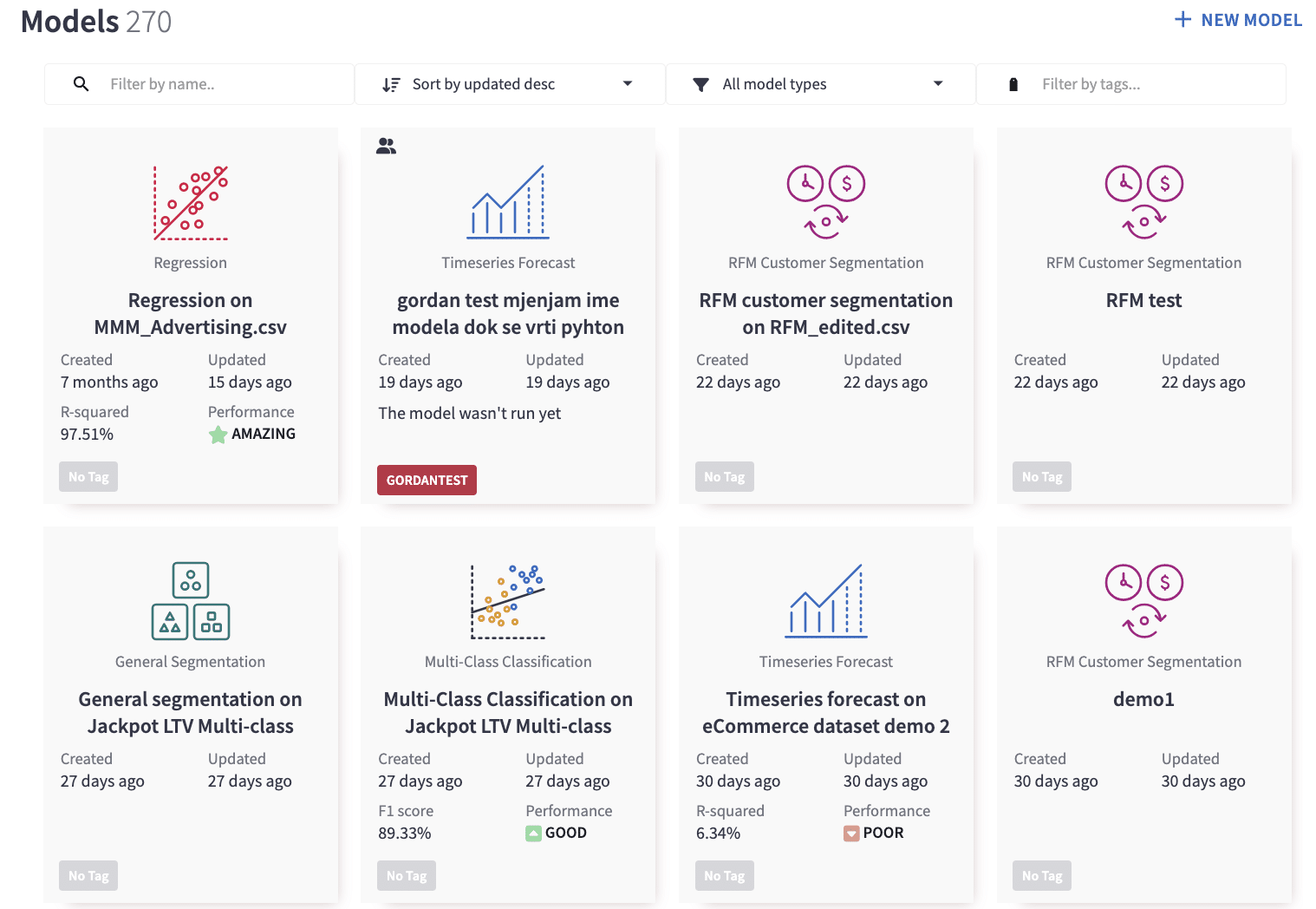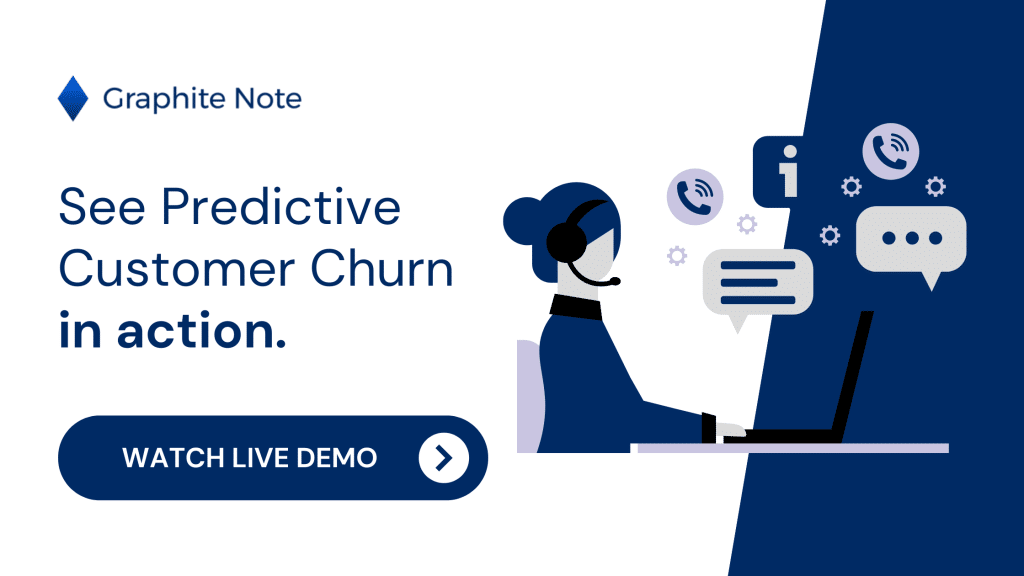How to predict churn using machine learning and keep your customers
Your business needs to understand how to predict customer churn and retain your customers. Billions of data points are available for you to analyze, that can boost your operations. Businesses can now gather, store, process, and analyze customer data to enhance their operations and profit margins. A customer churn prediction model can benefit your business in a variety of ways.
Machine learning and churn
Machine learning algorithms can help your business identify a range of data points and build churn prediction models. These include: which sales leads will convert, which customers need more attention to retain, which are more likely to cancel, or exit the sales funnel. Machine learning and churn prediction models can help you predict churn, a crucial metric for businesses that use the subscription business model. Identifying churn trends can help you improve your business.
Definition of churn
Churn refers to the rate at which your customers cease to participate in your sales funnel or operational funnel. Churn can also relate to their exit points within a system or process. Customer churn, also known as customer turnover or customer attrition, is a prime example in business data analytics. Customer churn occurs when your customer stops using your business’ product, service, or engaging with your business. This creates a “leak” whereby customers leave your business. This leak signifies lost revenue and missed opportunities. There are other types of churn your business should understand;. These include: revenue churn, product churn rates, and other types of customer churn analysis. Through using machine learning and a churn model, you can use data analytics to:
- Quantify the churn problem: You can undertake churn analysis. Using a churn model, you can predict churn, or measure churn, using a range of metrics. These include: the percentage of customers lost within a week, or number of customers unsubscribing from your email newsletter. Analyzing these metrics helps to identify customer groups who are at risk of churning. Knowing your churn rate is important for your business.
- Identify the churn triggers: By analyzing customer behavior, demographics, and usage patterns, data analytics can use a prediction method that reveals the factors driving churn. These include triggers, like: product dissatisfaction, poor customer service, or competitive offerings. Once you know where high churn takes place, or where your customers are at churn risk, you can optimize your business operations to prevent customer churn.
- Predict future churn: Predictive models, powered by machine learning, analyze historical data to forecast which customers are likely to churn and churn rates. This enables you to proactively intervene and offer targeted solutions, as a churn prevention strategy. This way, you can improve customer experience, enhance customer satisfaction, and improve your customer support systems.
Understanding churn using a customer churn model
Churn isn’t limited to customers. Churn also applies to various data analytics scenarios. You can predict churn by assessing:
- Website bounce rate: The percentage of visitors leaving a website after viewing only one page. High bounce rates indicate potential usability issues or irrelevant content. High churn rates on your website could mean you need to improve your website.
- Employee churn: The rate at which employees leave a company within a specific period. Data analytics can help identify factors leading to high employee turnover, such as low job satisfaction or lack of growth opportunities. Churn prevention strategies help your business save money in terms of replacing employees.
- Predictive model churn: A machine learning model’s performance degrades over time owing to changes in the underlying data or environment. Data analytics helps monitor predictive model performance and trigger timely retraining.
Why you should predict churn
By leveraging data analytics effectively, you can understand, address, and predict churn in its various forms. When you predict churn, you actively minimize losses and obtain valuable insights for improvement. This leads to stronger customer relationships, better website experiences, and higher employee retention. Churn is a signal, not a sentence. By predicting churn through machine learning, you can optimize your systems, processes, and experiences. A machine learning model that can predict churn helps you understand why your customers leave and what you can do to prevent it.
It is significantly more expensive to find new leads and convert them into new customers, than it is to retain existing or current customers. Your customer acquisition cost is much higher than your customer retention cost. The difference in costs could reach as much as 700%, and keeping even only 5% of your current customers could increase profits by 25%. Of course, every new customer is welcome, but the good news is it’s cheaper to keep your current customer too.
Customer churn refers to those that leave a company for one reason or another. It’s critical to know when customers are likely to leave their brand, so your teams can engage and retain them as much as possible. Many businesses do not know how to determine the actual case of churn or understand their customer pain points. This is where you can create a machine learning model to predict churn. It is important to predict churn as accurately as possible. The more precise your ability to predict churn, the more you can do to prevent churn.

Datasets you need to predict churn
Datasets to predict churn are crucial for predicting customer behavior. These are the datasets we recommend to predict customer churn for machine learning. In particular, when dealing with a subscription based business, you need these datasets to predict churn:
- Type: Their type of subscription.This may be time-based, such as monthly or weekly. This could also be size or package-based, such as free, standard, or premium packages.
- Length: This is defined by the amount of time they’ve spent as a customer. Length can also include the amount of time from the very first engagement you had with them as a business.
- Geographical location: Your customers’ geographical location can play a role in how you predict churn.
Key metrics to predict churn
These are some of the key metrics your business can use to predict churn using machine learning:
- Customers who left: This will be the target column in your machine learning model to predict churn. This will include the algorithm’s prediction. Usually, this is a column that denotes True/False or 0/1 values.
- Services customers used: This identifies the services or subscription plans the customers signed up for and used. The different subscription tiers and features indicate the customer’s preferences. Identifying the services customers use also helps you understand what they found most relevant to their daily lives.
- Customer account information: This dataset includes information about a customer’s preferred payment method, billing, how long they have been with a company or tenure, monthly charges, and transaction history. This also includes account names, billing addresses, and contact information.
Demographic information: This includes information about a customer’s gender, age, job title, company, location, and civil status. Demographics affect churn prediction because they help teams identify customer segments that are likely not to respond or are not satisfied with the brand or service.
How to create a machine learning model to predict churn
Machine learning can build systems and algorithms that find patterns and trends in data. These trends are analyzed and organized to predict future behavior. In models that predict churn, the machine learning model observes the characteristics and features that may cause a customer’s enjoyment and satisfaction to decrease. The algorithm will identify and reveal customer behavior patterns in the initial training phase. The machine learning model then compares those that have left a brand and those that have remained. Once the machine learning algorithm is adequately trained, it can review all customer behavior and identify which customers will potentially leave.
Being able to predict churn helps you design and implement proactive programs to identify and eradicate your customer’s pain points. Customer success teams can then engage and interact meaningfully with customers on the verge of leaving and ideally prevent churn before it occurs.
No-code machine learning to predict churn
Using a no-code machine learning software like Graphite Note to create machine learning models to predict churn, you need to first import your datasets. Every dataset has a summary that allows you to review feature columns, values, and other statistical measures.
A column labeled “Churn” should be included, with a binary value system that indicates when a customer has left “Yes” (1) or “No” (0). This column is essential in all predictive analytics machine learning models used to predict churn.
What Graphite Note needs to predict churn
For example, Graphite Note, when using the binary classification model, needs the following datasets to predict churn:
- Target column (churn), which we want to predict in the future.
- Set of attributes or features that can affect the target column.
Once the machine learning model to predict churn is built and trained, you can ask the model to predict which customers are likely to become churners. This helps you identify them, and engage with them so you can mitigate against them leaving your business.

Graphite Note ensures that the steps to achieve the best results will be automatically handled. Graphite Note samples 80% of the data and trains several machine learning models to predict churn. The remaining 20% will also be tested using the same models and calculate the relevant accuracy scores. Graphite Note will automatically choose the best-performing machine model based on the result.




